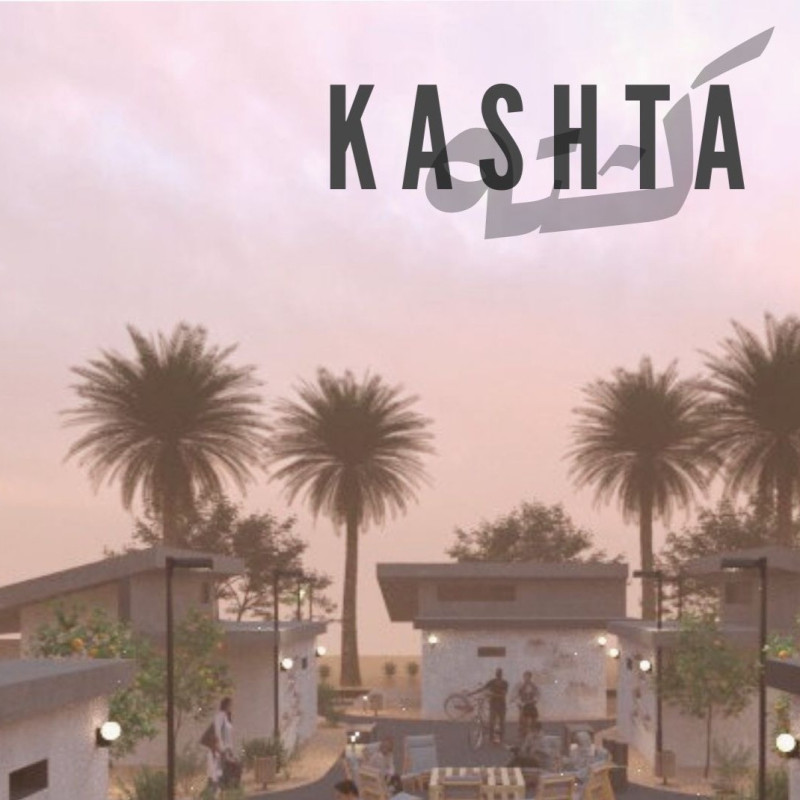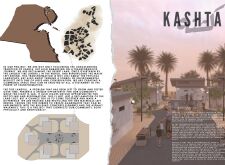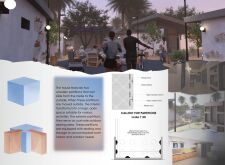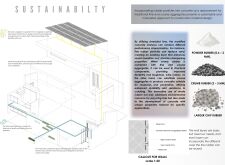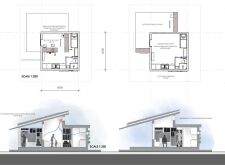5 key facts about this project
**Overview**
Located in Kuwait, the Kashta project reflects a contemporary interpretation of traditional Kuwaiti architecture while addressing local environmental and social challenges. Situated near the world's largest tire landfill, the design aims to reclaim a neglected desert landscape, fostering community engagement and ecological preservation through innovative architecture.
**Material Innovation and Sustainability**
A key aspect of Kashta is its commitment to sustainability and innovative material use. The project incorporates recycled rubber from discarded tires into construction elements, such as concrete and paving. This utilization not only enhances structural performance but also contributes to sound insulation and durability. The selection of materials includes concrete with tire aggregates, powder rubber for sound dampening, and crumb rubber for improved flexibility, demonstrating an inventive approach to resource management and ecological responsibility.
**Spatial Strategy and Community Interaction**
The spatial organization of Kashta prioritizes flexibility and community cohesion. The design features movable wooden partitions that allow spaces to be reconfigured for various communal activities, supporting a dynamic residential experience. Outdoor areas are integrated to facilitate gatherings and cultural events, promoting a shared sense of identity among residents. The overall layout, along with strategically placed windows for cross ventilation and renewable energy solutions like solar panels, contributes to the project's sustainability objectives while encouraging a cohesive community lifestyle.


